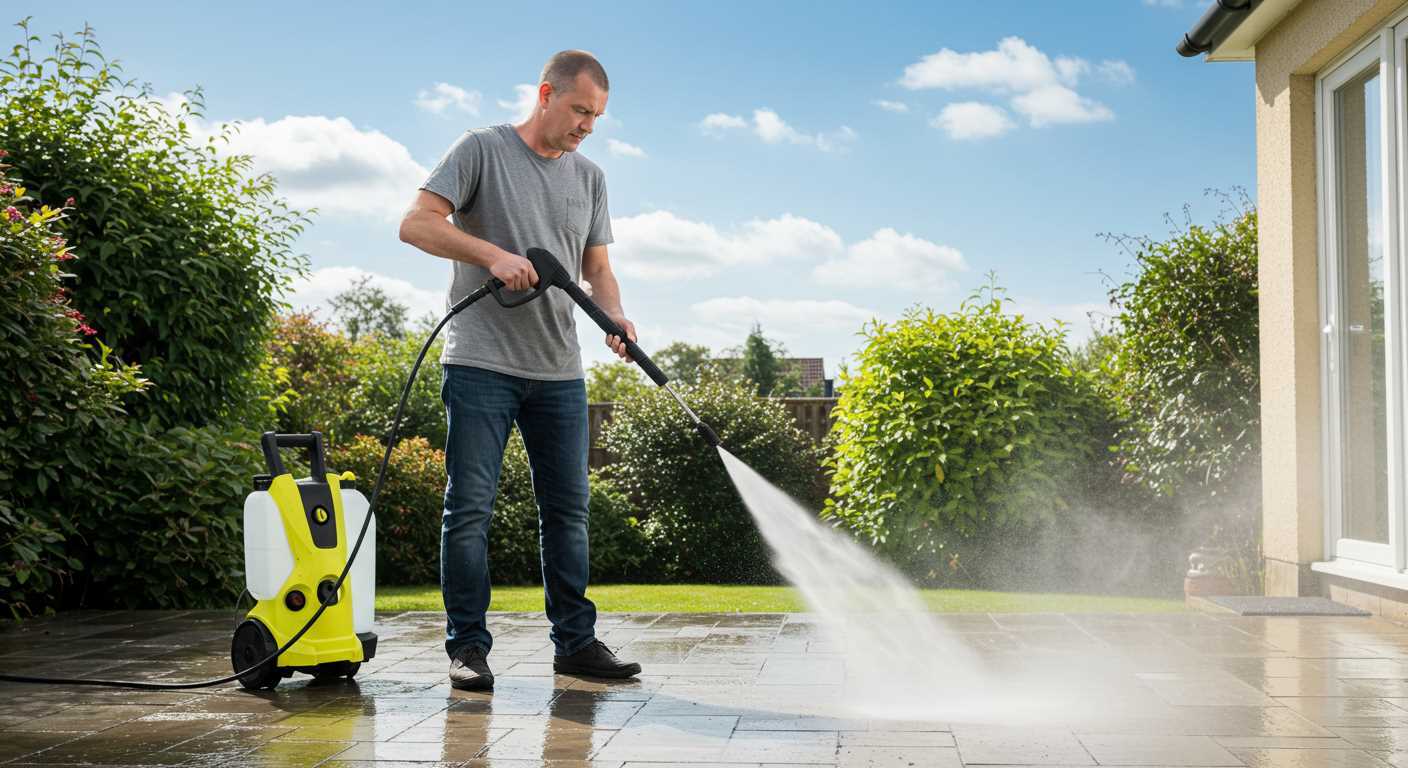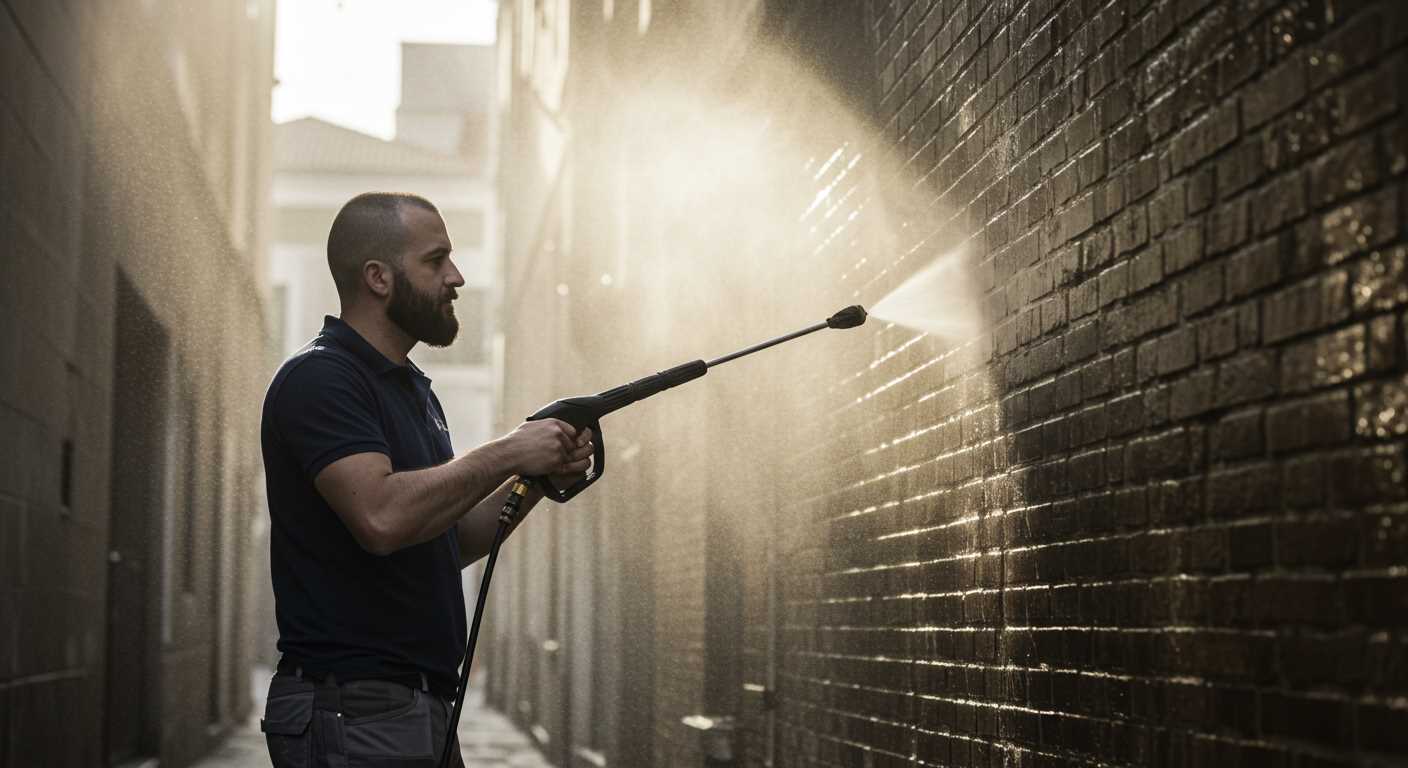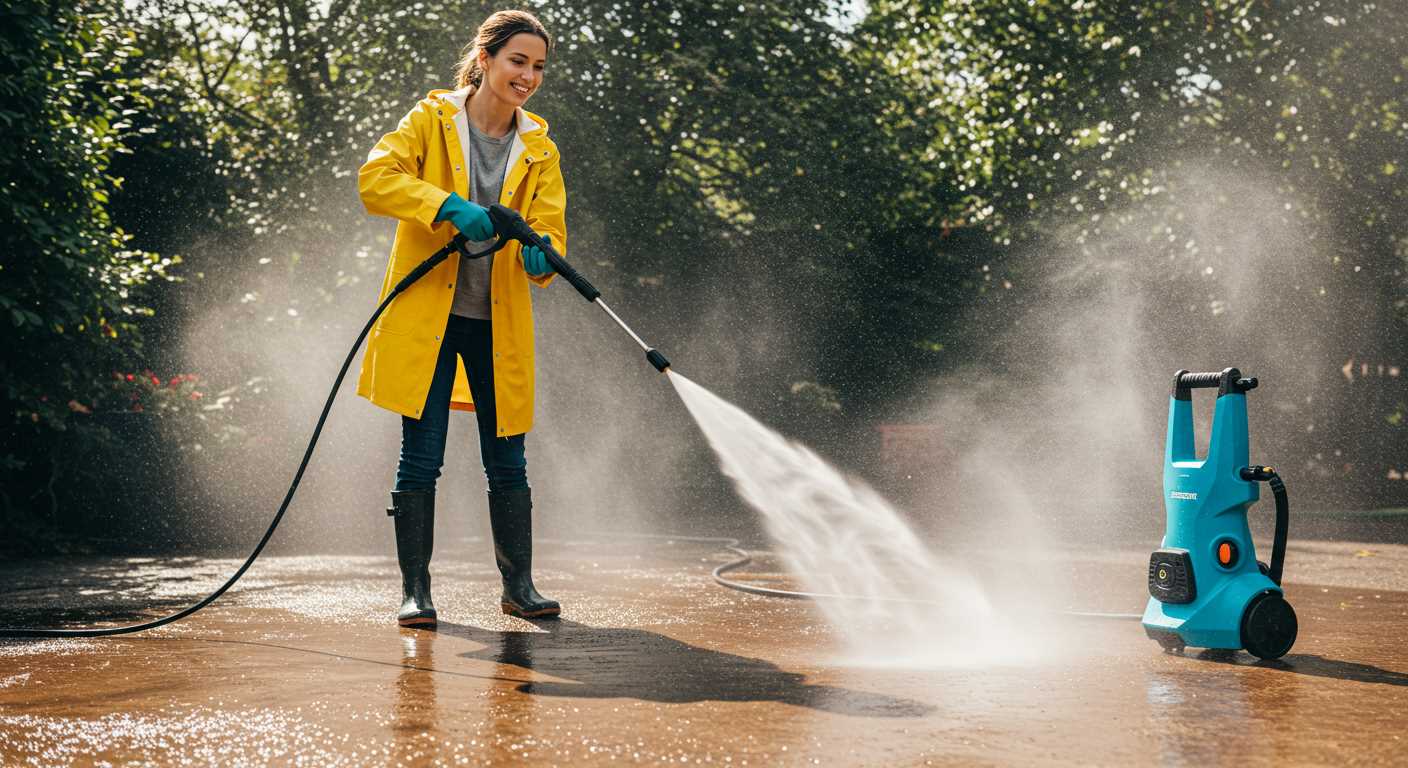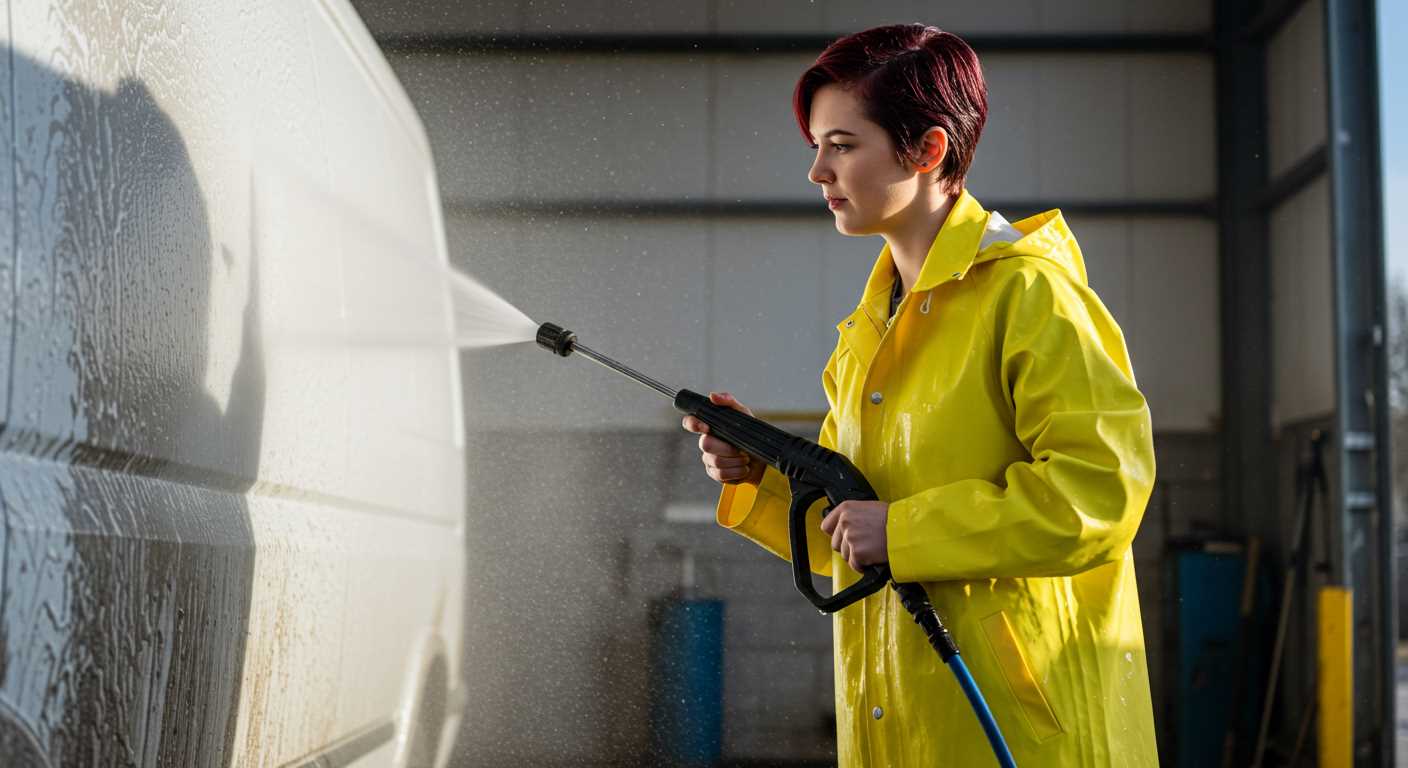To achieve a spick-and-span finish on your exterior surfaces, a straightforward approach using common household items often surpasses the effectiveness of high-pressure cleaning machines. Begin by mixing warm water with a mild detergent or a specialised cleaning solution in a bucket. This combination will help lift dirt, grime, and mildew from the surface. A soft bristle brush or a sponge will work wonders when applying this mixture, allowing you to scrub away stubborn stains without damaging the material.
After scrubbing, it’s crucial to rinse the area thoroughly. A standard garden hose equipped with a spray nozzle can provide sufficient pressure to remove soap and dirt. Ensure you spray at a downward angle to prevent water from seeping behind the cladding, which could lead to mould growth or structural damage. If you face particularly stubborn spots, a second application of your cleaning solution may be necessary before rinsing again.
For a final touch, an environment-friendly solution of vinegar and water can serve as a natural antibacterial agent while simultaneously providing shine to the surface. Simply mix equal parts vinegar and water, then apply with a spray bottle. Allow it to sit for a few minutes before rinsing, ensuring a fresh and clean appearance that enhances the aesthetic of your property.
Effective Techniques for Cleaning Your Exterior Walls
Mix a solution of warm water and a mild detergent. Use a bucket to combine about ¼ cup of detergent with a gallon of water. This ratio is gentle yet effective for most surfaces.
Utilise a soft-bristle brush with a long handle for better reach. Dip the brush into your cleaning solution and apply it to the exterior, starting from the bottom and working your way up. This method prevents streaking and ensures even coverage.
Rinse each section with clean water using a garden hose. Aim for a gentle spray to avoid potential damage. Test the flow first on a small area to ensure it’s adequate without being too forceful.
For stubborn stains, create a paste with baking soda and water. Apply it directly to the troubled area, let it sit for 10 minutes, and scrub gently with your brush before rinsing. Avoid harsh chemicals that may degrade your finish or siding material.
Set a maintenance schedule to regularly clean your exterior every six months. This helps prevent the build-up of dirt and algae, making future cleanings much simpler.
| Surface Type | Recommended Cleaning Solution |
|---|---|
| Vinyl | Mild detergent solution |
| Wood | Oxygen bleach solution |
| Aluminium | Soapy water or vinegar solution |
| Stucco | Specialised stucco cleaner |
After cleansing, consider applying a protective finish suitable for your material, which can help resist dirt accumulation and prolong the appearance of your walls.
Choosing the Right Cleaning Solution for Your Siding Material
Select a cleaning solution based on the material of your exterior surface. Each type requires a tailored approach to ensure safety and effectiveness.
Vinyl
- Use a mixture of warm water and a mild dish soap. This basic solution effectively removes dirt and grime.
- For tougher stains, consider a specially formulated vinyl cleaner. Follow the product instructions closely for best results.
Wood
- Mix one part white vinegar to three parts water for a natural cleaner. This solution helps combat mould and mildew.
- For extra protection, look for wood cleaners containing sodium hypochlorite. Its active ingredient helps to deeply clean without damaging the wood.
Aluminium
- Combine a non-abrasive car wash soap with warm water. This is gentle enough to avoid scratching while effectively lifting dirt.
- If oxidation is visible, opt for an aluminium cleaner with oxalic acid, which can restore shine.
Brick and Stone
- A solution made of trisodium phosphate (TSP) and water can remove tough stains. Use gloves and protective eyewear when handling TSP.
- Alternatively, a biodegradable masonry cleaner can be employed for a more environmentally friendly option.
Stucco
- Blend water and a mild, pH-balanced detergent. This will avoid damaging the porous surface.
- For stubborn stains, a mix of baking soda and water can offer a gentle abrasive action without harm.
Choosing the right cleaner ensures longevity and appearance maintenance of your structure. Always test any solution on a small area to verify compatibility with your surface before proceeding.
Gathering Necessary Tools for a Manual Clean

To effectively prepare for a manual cleaning session, focus on gathering a few specific tools. A long-handled scrub brush is crucial, as it allows for reaching high areas without a ladder. Pair it with a sturdy bucket to mix your cleaning solution and rinse off debris.
Additional Equipment

Include a sponge or microfiber cloth for detailed polishing, especially on textured surfaces. A garden hose with a spray nozzle is imperative for rinsing surfaces thoroughly after treating them. Lastly, consider protective gloves and safety goggles to safeguard against harsh chemicals and debris.
Product Selection

Invest in a quality cleaning solution tailored to your exterior material. This step ensures effective removal of grime and prevents damage. Always check labels for compatibility and safety instructions to maintain your surfaces in prime condition.
Preparing the Area Around Your Home Before Washing

Clear the vicinity of any furniture, planters, or decorations. This prevents damage during the cleaning process and facilitates easier access.
- Move all potted plants at least 10 feet away to protect them from cleaning agents.
- Relocate exterior furniture, such as chairs and tables, to avoid unwanted splashes and spills.
- Remove any wall hangings or outdoor decorations that could hinder your ability to clean effectively.
Inspect the ground for any potential hazards. Ensure that the area is free of obstacles like hoses, pet toys, or debris that could cause slips or falls while performing maintenance.
Cover nearby electrical outlets and vents with plastic wrap or tape. This shields them from moisture, reducing the risk of damage or electrical hazards.
Consider using a drop cloth or tarpaulin to protect plants or flowers that cannot be moved. This also helps to catch any excess solution that may drip down.
Wind direction plays a role in the cleaning process. Be mindful of where the breeze is coming from to avoid overspray on windows, nearby vehicles, or neighbours’ properties.
Check local regulations regarding the use of certain cleaning chemicals to ensure compliance and protect the environment in your area.
Step-by-Step Instructions for Hand Washing Your Siding
Begin with a thorough sweep of the area around your home to remove any loose debris, leaves, or dirt. This ensures that the grime won’t be pushed onto the surface during your cleaning process.
Prepare your cleaning solution according to the material of your home’s exterior. For vinyl surfaces, a mixture of warm water and a few drops of dish soap works wonders. For wood, consider using a mixture containing a wood cleaner or a mild detergent to avoid damaging the finish.
Equip yourself with a soft-bristle brush or sponge. A long-handled brush can help reach elevated sections easily. Make sure to have a bucket for your cleaning solution and a separate bucket filled with plain water for rinsing.
Once your tools are ready, dip the brush or sponge into the soapy mixture, then start scrubbing from the top of the surface downwards. This prevents dirty water from dripping onto areas you’ve just cleaned. Work in small sections to maintain control and ensure all areas are covered effectively.
After scrubbing each section, rinse with clean water. Use a garden hose with a spray nozzle or a bucket of water to pour clean water over the area, ensuring all soap is thoroughly removed. Any leftover cleaner can attract dirt and defeat your efforts.
Pay special attention to corners and crevices where dirt tends to accumulate. A small detailing brush can be useful to tackle these stubborn spots, ensuring a thorough clean.
Once completed, inspect your work from a distance to spot any areas requiring additional attention. It’s advisable to repeat the process on particularly stubborn stains or heavily soiled sections.
Remember to clean tools and brushes after use to prolong their life and ensure they’re ready for the next task.
Tips for Removing Stubborn Stains and Mildew
For tough blemishes and mould, begin with a mixture of white vinegar and water in a spray bottle, using a 1:1 ratio. Spray directly onto the affected area and allow it to sit for 15-20 minutes before scrubbing with a soft-bristle brush. The acetic acid in the vinegar effectively breaks down organic material.
Utilising Baking Soda
If the problem persists, create a paste using baking soda and water. This abrasive yet gentle solution can be applied directly to stubborn spots. Let it sit for about 10 minutes, then scrub the area with a brush to lift the stains. Rinse thoroughly to remove any residue.
Commercial Cleaners
Consider using a commercial cleaner specifically designed for the material of your exterior. Always test a small inconspicuous area first to ensure compatibility. Apply according to the manufacturer’s instructions for best results. Products containing oxygen bleach can effectively tackle mould while being less harsh than chlorine bleach.
In cases of more severe mildew, create a more potent solution by mixing equal parts of liquid dish soap and warm water. This mixture not only aids in loosening dirt but also helps in preventing further mould growth. Use a sturdy sponge to apply and scrub, following up with a thorough rinse.
For persistent stains, try using a diluted solution of oxygen bleach or hydrogen peroxide. Apply it directly to the stains and let it sit for 10-15 minutes before scrubbing and rinsing. Always ensure proper ventilation when using stronger chemicals and protect adjacent surfaces.
Safely Rinsing and Drying Your Siding Post-Cleaning
After the thorough cleaning process, it’s crucial to rinse all surfaces to eliminate any remaining cleaning solution. Use a garden hose fitted with a spray nozzle to apply a gentle stream of water. Start at the top and work your way down, ensuring that the entire area receives adequate rinsing. This helps prevent streaks and water spots.
Pay attention to corners and edges where cleaning agents can linger. For stubborn residues, a gentle scrub with a soft-bristled brush while rinsing can help. Avoid a forceful water jet, as it may damage the exterior.
After rinsing, drying the areas promptly will help to prevent water spots and streaking. Utilize a clean, absorbent towel or microfiber cloth to wipe down surfaces, especially in areas prone to pooling. Alternatively, consider using a leaf blower on a lower setting to blow off excess water effectively. This method not only aids in drying but can also reach difficult spots that might be overlooked.
Monitor the weather forecast; ensure that there’s no rain predicted shortly after the rinsing is completed. If necessary, provide a protective cover to prevent water accumulation before the areas have dried completely.
Implement these methods to maintain the appearance and longevity of your home’s exterior while avoiding potential damage to the materials used. A thorough rinse, combined with careful drying, ensures a clean and well-maintained look.
FAQ:
Can I use bleach to clean my siding without a pressure washer?
Yes, you can use bleach to clean siding, but it must be diluted properly to avoid damaging the material or harming surrounding plants. A common mixture is one part bleach to three parts water. Apply the solution to the siding using a sprayer or a soft cloth, keeping it on the surface for about 10-15 minutes to tackle mildew or stains. Afterward, rinse thoroughly with water to ensure no bleach residue remains. Be cautious with the type of siding you have; for instance, wood siding can be particularly sensitive to bleach, and it’s best to consult the manufacturer’s guidelines or employ alternative cleaning methods for such materials.
What type of cleaning solution is safe for all types of siding?
A mild soap solution is generally safe for all types of siding. You can create this by mixing a few drops of dish soap in a bucket of warm water. This solution is effective for light cleaning and safe for vinyl, wood, and fibre cement siding. For tougher stains, consider using a specialised cleaner designed for your specific type of siding, but always check the label for compatibility. It’s advisable to test any cleaning solution on a small section first to ensure it doesn’t cause discoloration or damage.
What supplies do I need to wash siding without a pressure washer?
To wash siding without a pressure washer, you will require a few basic supplies. Firstly, gather a bucket, a long-handled soft brush or sponge, and a garden hose. For the cleaning solution, you can either use a commercial siding cleaner or make your own using water mixed with mild detergent or vinegar. It is advisable to also have protective equipment, like gloves and goggles, to ensure your safety while cleaning. Additionally, a ladder might be necessary if your siding is elevated.






